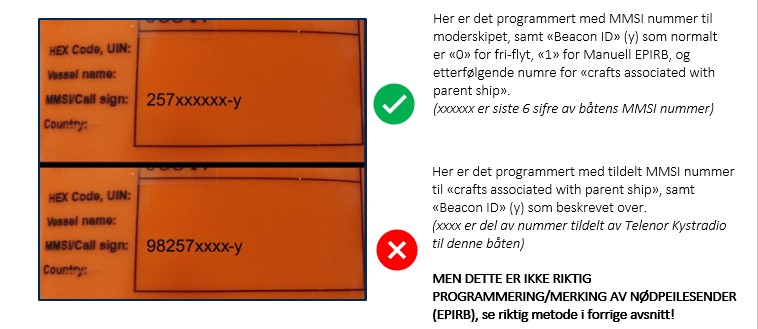"The thing is that the error is not related to the EPIRB itself, even if it is programmed with MMSI 98MIDxxxx, where "MID" is country code 257, 258 or 259," says Rune Magne Nilsen, Senior Engineer at the Section for Cargo Ships and Mobile Offshore Units.
See also: EPIRB problem
The EPIRB will transmit a normal distress message on 406.xxx MHz, and then this message will be detected by Cospas-Sarsat's satellites. At the same time, the EPIRB will transmit the normal homing frequency 121.5 MHz.
The Hex code will be interpreted as corrupt
The problem is that the distress message of the EPIRB, a unique Hex code where MMSI.id 98MIDxxxx is part of the code being processed by Cospas-Sarsat's shore-based SAR system, will interpret the Hex code as corrupt. That means that such a distress message will not be forwarded to the Norwegian rescue services, who would be in a position to initiate a search and rescue operation.
"There is a very limited number of potential vessels with EPIRBs programmed with MMSI 98MIDxxxx. Most likely, these are larger vessels with lifeboats and/or high-speed RIBs and similar attached to a mother ship," Nilsen adds.
See examples of correct and incorrect programming
The Norwegian Maritime Authiority would like to stress that the EPIRB problem related to distress messages from EPIRBs programmed with MMSI 98MIDxxxx may apply to all types of EPIRBs operating on 406.xxx MHz and approved by Cospas-Sarsat, regardless of manufacturer.
The example below shows the correct and incorrect programming/marking related to the MMSI numbers of boats (lifeboats, rescue boats, etc.) attached to a mother ship:

